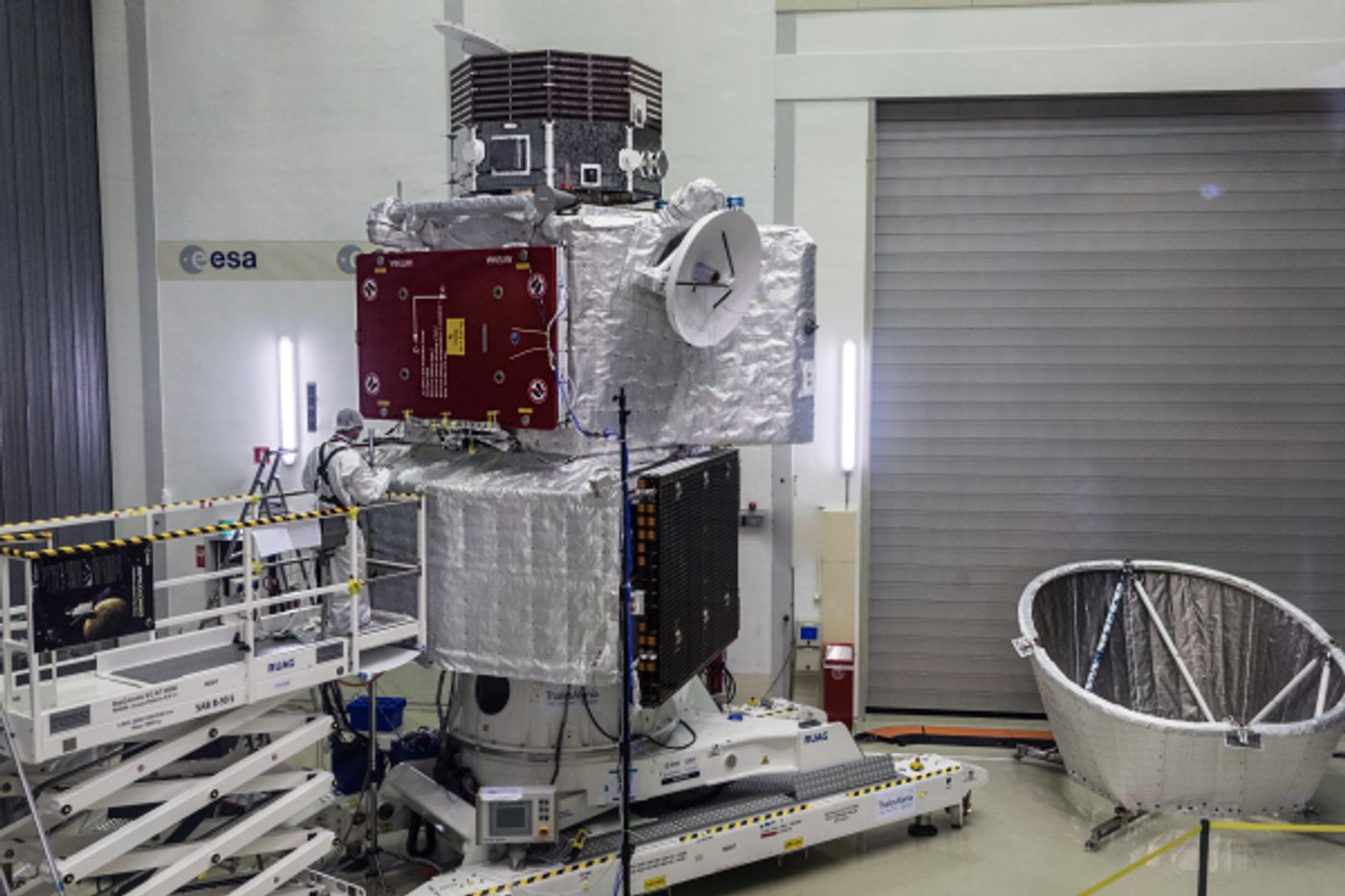BepiColombo: ESA's Upcoming Mission to Visit and Study Mercury
If you were to ask anyone what they knew about Mercury, chances are you would be met with some pretty generic responses, such as how it’s the closest planet to the Sun, how the planet is quite small, and how the planet's surface gets extremely hot.
On the other hand, the European Space Agency is planning a mission dubbed BepiColombo, which will help us learn more about Mercury by gathering some of the most advanced measurements regarding its internal and external structure, magnetic field, and atmosphere to date.
Image Credit: European Space Agency
BepiColombo has already been assembled and is undergoing some final testing phases before its launch in 2018. The trip to Mercury will then take an additional seven years to complete before it will start gathering the data it was built to collect.
Related: Mercury is tectonically-active, just like the Earth
As you can probably tell from the illustration, BepiColombo is a bit “different” in design. It’s a ‘stacked’ spacecraft that’s carrying multiple orbiters owned by both Europe and Japan that will each serve their own purpose once they separate upon arrival at Mercury.
The mission will also be taking a closer look at the planet’s surface craters, which should be an easy task considering the orbiters will be very close to the toasty planet’s surface while they study it; the only challenge will be withstanding the heat.
The European Space Agency says they’ve outfitted BepiColombo with more than 50 layers of aluminum and ceramics that help insulate its delicate instruments from the radiation and energies it will be subjected to while in such close proximity to the Sun.
Outfitted with this insulation, the BepiColombo mission should last anywhere from one to two years before it goes into suicide mode and crashes into Mercury’s surface. There is, of course, a chance the mission could last longer, as the estimates were made conservatively.
Related: Is a great valley to blame for Mercury's internal shrinking?
There is a while to go yet, as additional stress testing is necessary to ensure that the spacecraft is indeed space-ready. While BepiColombo passed vibration tests with flying colors, it will now be subjected to vacuum chamber testing to ensure it can withstand the harsh environment of outer space. You can watch the vibration testing below:
It should be interesting to see what this mission finds out about Mercury, especially considering that we haven’t really visited this planet too many times before. NASA has been to Mercury previously, but BepiColombo will build off of our existing knowledge, benefiting all of humanity.
Source: ESA









